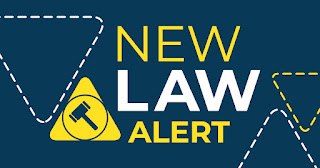By Executive Order 202.14, Governor Cuomo has permitted the use of this form for "any parent, a legal guardian, a legal custodian, or primary caretaker who works or volunteers in a health care facility or who reasonably believes that they may otherwise be exposed to COVID-19... [to] designate a standby guardian" for their children:
Designation of Standby Guardian
(NOTE: As used in this form, the term “parent” shall include a parent, a court-appointed guardian of an infant's person or property, a legal custodian, or a primary caretaker, and the term “child(ren)” shall include the dependant infant of a parent, court-appointed guardian, legal custodian or primary caretaker
I _________________________ hereby designate
________________________________________________________________________________________________________________________________________________________________(name, home address and telephone number of standby guardian) as standby guardian of the person and property of my child(ren) (You may, if you wish, provide that the standby guardian's authority shall extend only to the person, or only to the property, of your child, by crossing out “person” or “property”, whichever is inapplicable, above.)
______________________________________________________________________________________________________________________________________________________________
(name of child(ren)).
This appointment as the standby guardian of my child(ren) would be in the best interests of my child(ren) because:
________________________________________________________________________________________________________________________________________________________________
(insert justification for appointment of this person as the standby guardian)
The standby guardian's authority shall take effect: (1) if my doctor concludes in writing that I am mentally incapacitated, and thus unable to care for my child(ren); (2) if my doctor concludes in writing that I am physically debilitated, and thus unable to care for my child(ren) and I consent in writing, before two witnesses, to the standby guardian's authority taking effect; (3) If I become subject to an administrative separation such that care and supervision of the child will be interrupted or cannot be provided; or (4) upon my death.
In the event the person I designate above is unable or unwilling to act as guardian for my child(ren), I hereby designate
________________________________________________________________________________________________________________________________________________________________
(name, home address and telephone number of alternate standby guardian), as standby guardian of my child(ren).
I also understand that my standby guardian's authority will cease sixty days after commencing unless by such date he or she petitions the court for appointment as guardian.
I understand that I retain full parental, guardianship, custodial or caretaker rights even after the commencement of the standby guardian's authority, and may revoke the standby guardianship at any time.
Signature:
Address:
Date:
I declare that the person whose name appears above signed this document in my presence, or was physically unable to sign and asked another to sign this document, who did so in my presence. I further declare that I am at least eighteen years old and am not the person designated as standby guardian.
Witness' Signature:
Address:
Date:
Witness' Signature:
Address:











